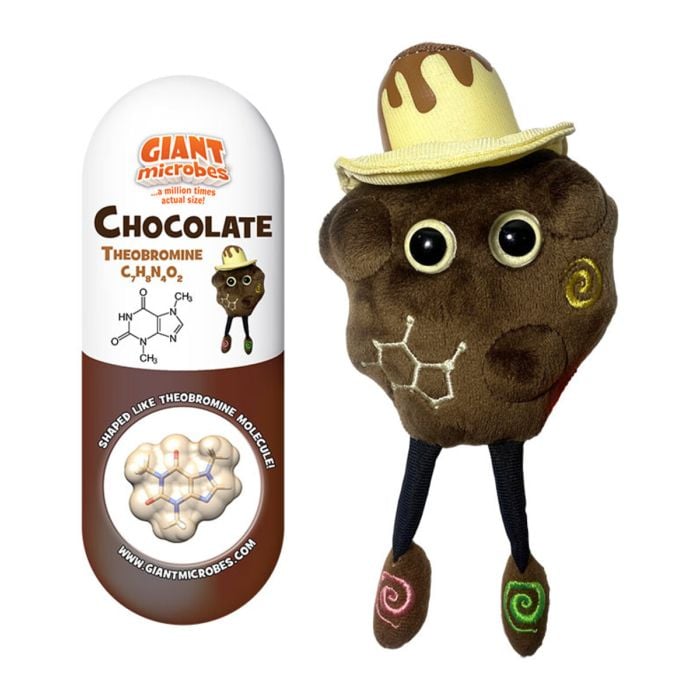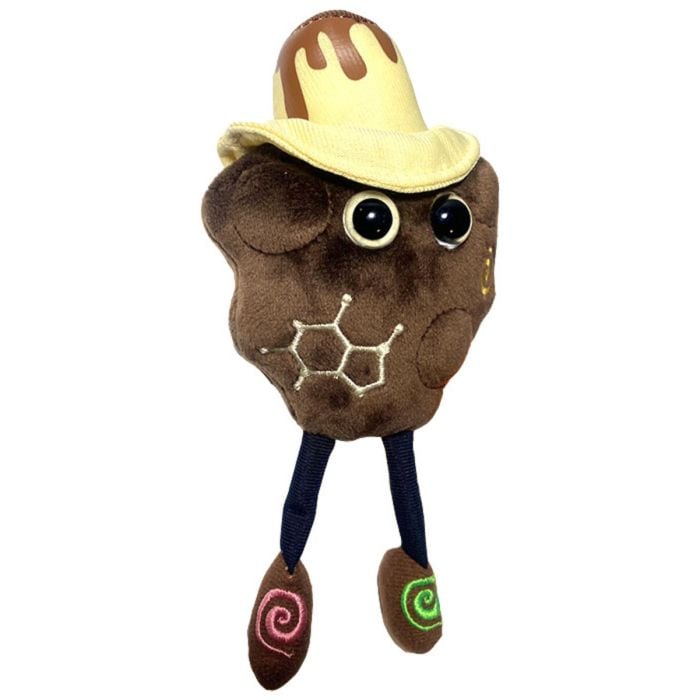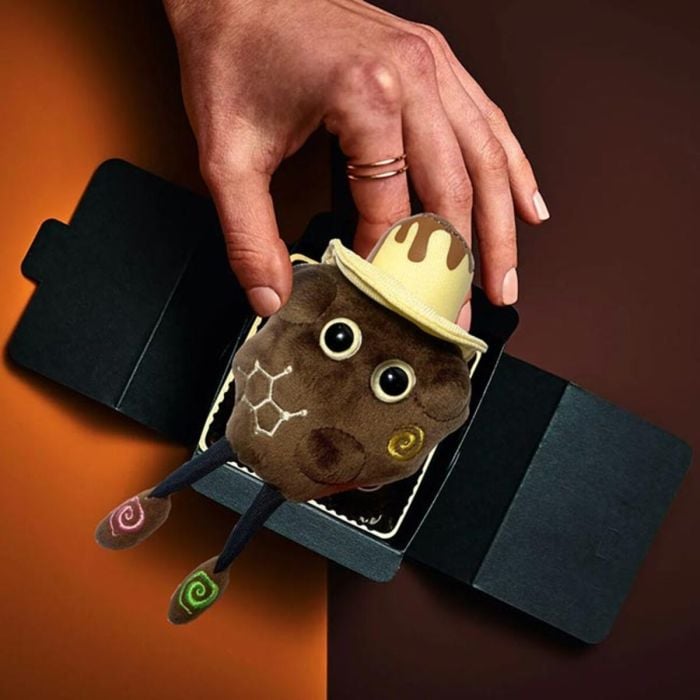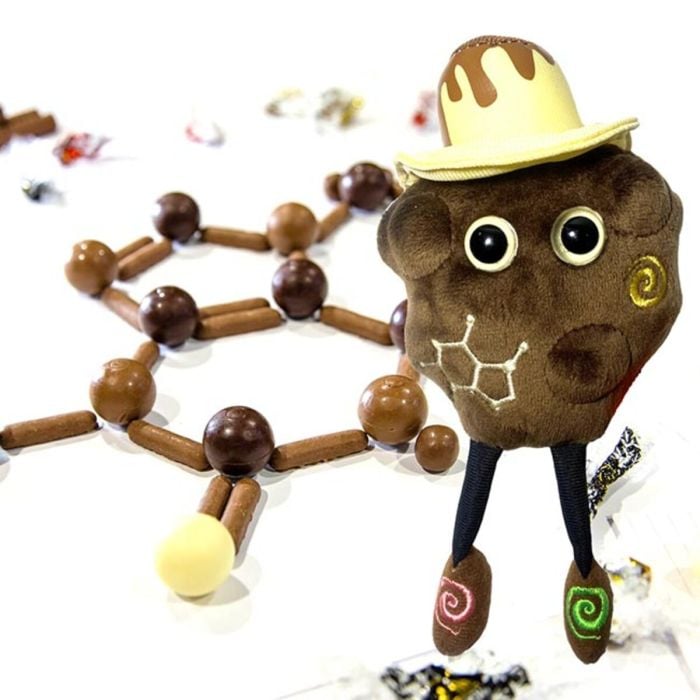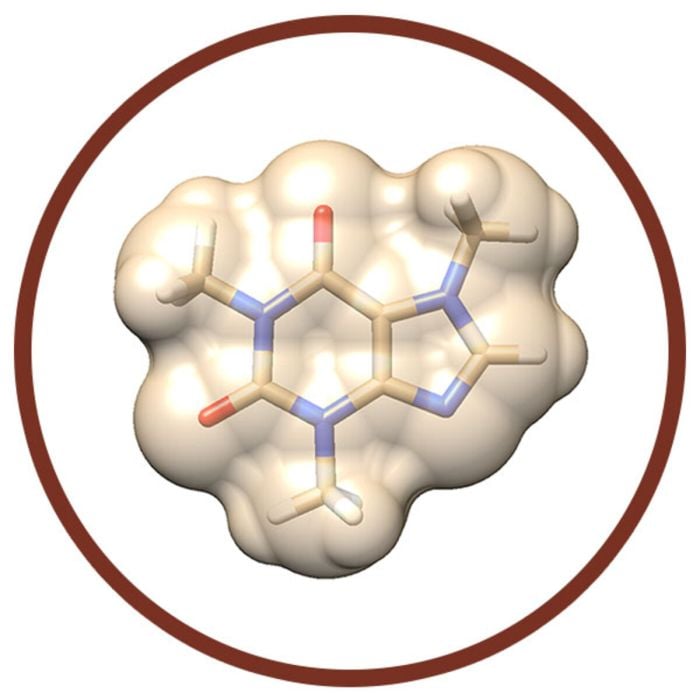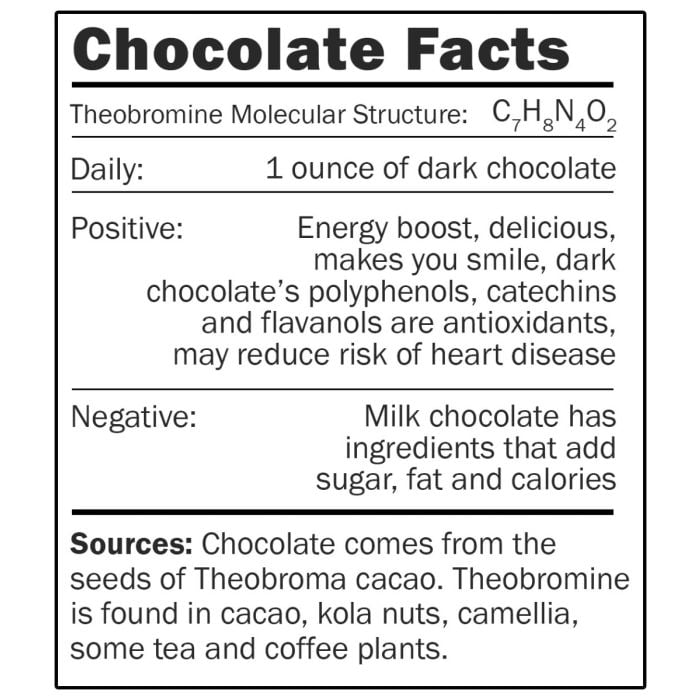Chocolate
Chocolate is a delicious topic. This adorable plush Chocolate is based on the shape of the actual theobromine molecule. Chocolate comes from the seeds of Theobroma cacao. Theobromine is one of the most stimulating compounds found in chocolate.
Learn about the science and health benefits of Chocolate with GIANTmicrobes irresistibly cute plush Chocolate! Fun and memorable way to learn about health, science and nature. Wonderful gift for friends, family, students, scientists, healthcare professionals, bakers, chocolatiers, lovers and all lovers of chocolate, science and health.
Features detailed stitching and includes an educational printed card with fascinating facts.
Size: 6 x 3 x 2”
Product Details
Additional Information
| Sizes | Giantmicrobes are based on actual microbes, cells, organisms and other critters, only 1,000,000 times actual size! Gigantic (GG) 16-24" XL (XL) 10-15" Original (PD) 5-8" Keychain (KC) 2-4" with clip |
|---|---|
| Materials | Plush from all new materials. Stuffed with polyester fiber fill. Surface washable: sponge with water & soap, air dry. |
| Packaging | Each plush microbe includes a printed card with fun, educational and fascinating facts about the actual microbe or cell. |
| Safety | Every product meets or exceeds U.S. and European standards for safety. For ages 3 and up. |
All about Chocolate
Chocolate is a delicious and stimulating topic. It is produced from the seeds of Theobroma cacao, a tropical tree that can grow up to 50 feet. Cacao was first cultivated thousands of years ago in the Amazon. The native peoples of southern Mexico figured out how to turn cacao into the earthy, fragrant and chemically complex substance we call chocolate. The tree’s name Theobroma means “food of the gods”. Ripe pods are harvested for their seeds (or beans), which are fermented, dried, roasted to remove the bitterness and cracked to release the inner kernel, called cacao nibs. The nibs are then ground into chocolate.
Chocolate contains more than 500 flavor compounds and the two stimulants theobromine and caffeine. These are alkaloids, complex organic compounds found in only a few plants. Theobromine is found in cacao, the kola nut, camellia and a few tea and coffee plants. It is a vasodilator, a diuretic and offers a milder boost than caffeine. Humans easily metabolize theobromine, but it is poisonous to dogs and cats.
Chocolate does have benefits, such as making you smile. Yet its actions on the body are mostly unknown, so it’s best to keep a healthy skepticism about wide-ranging health claims. Dark chocolate has 50% or more cocoa solids and is certainly better for you than milk chocolate, which has added sugar.
For most of its long history, chocolate was drunk, not eaten. The Olmec, Mayan and Aztec peoples turned cacao into a thick unsweetened drink. They also used the bean as currency. In the 1600s, the Spanish recognized cacao as a precious commodity and shipped it to Europe, where sweetened chocolate became a popular drink and chocolate houses sprang up as meeting places. Solid chocolate was not eaten until the 1800s when the English made the first chocolate bar. The next time you crave the gastronomical gift of chocolate, consider the wonderous journey of cacao and the science of theobromine. That is food for thought.









